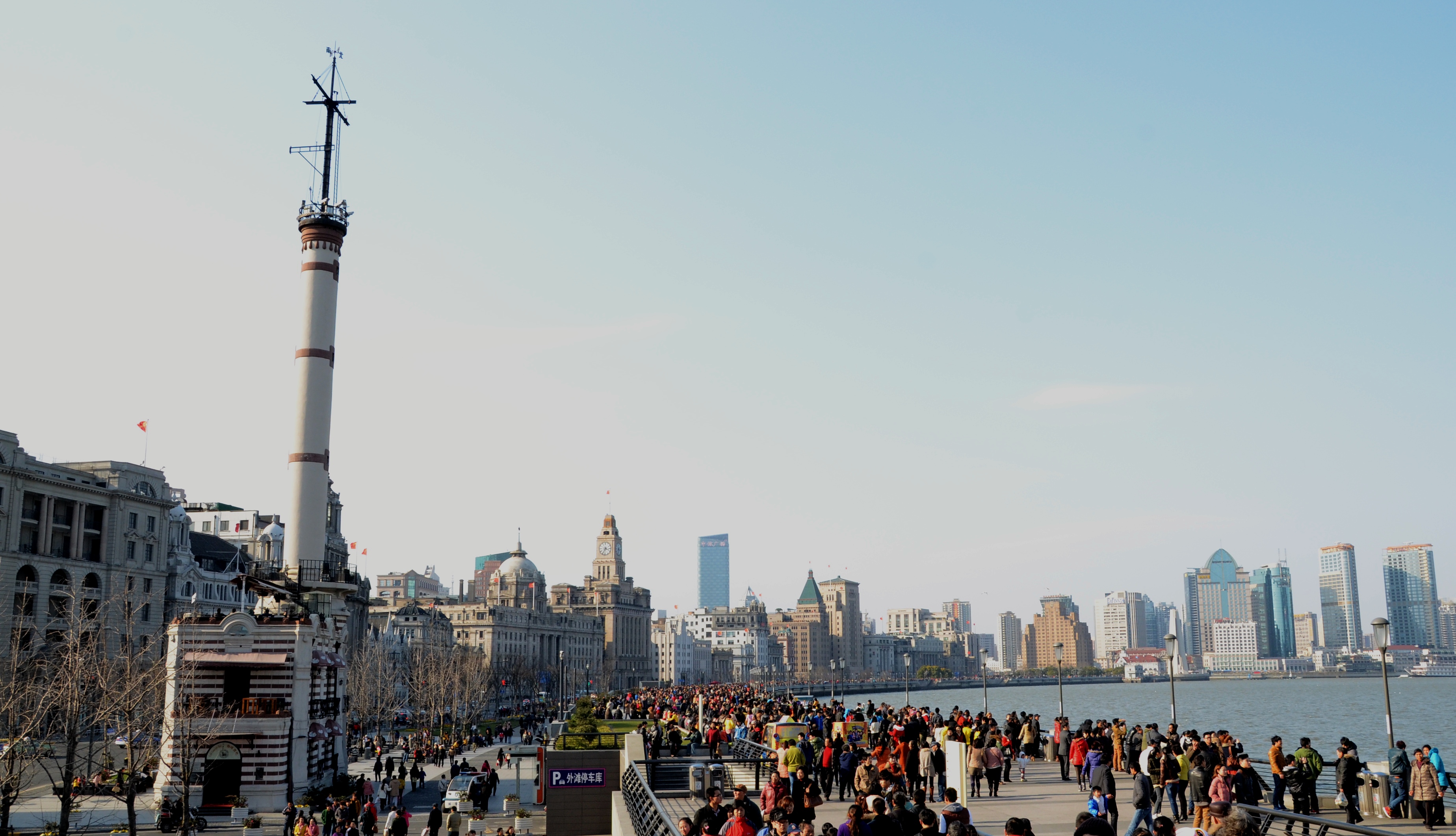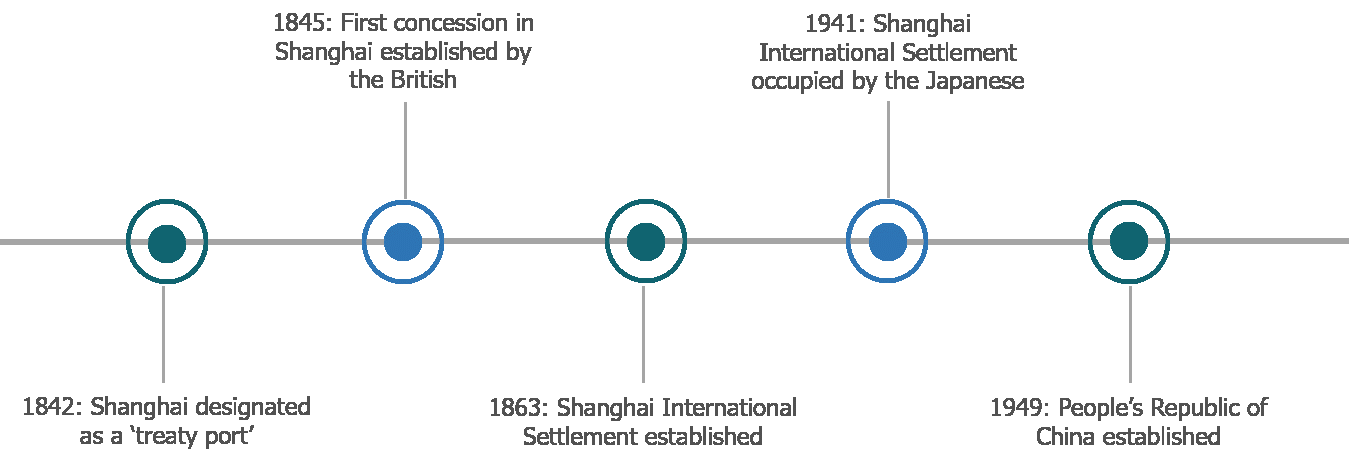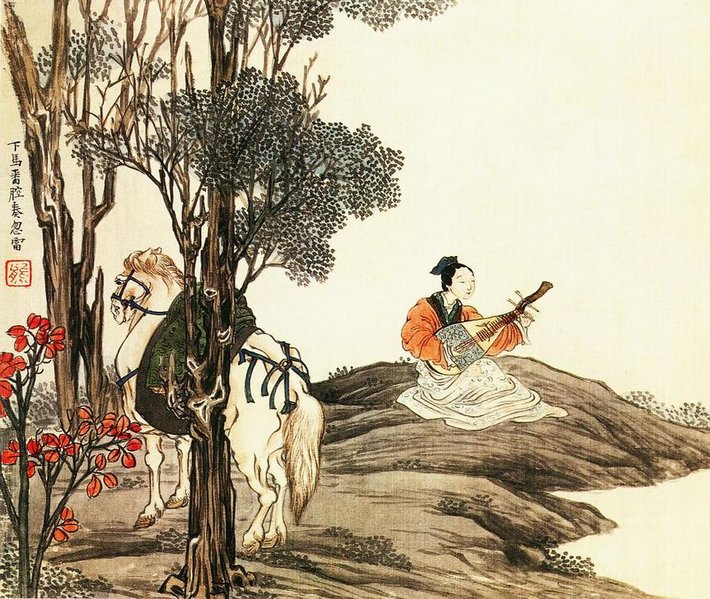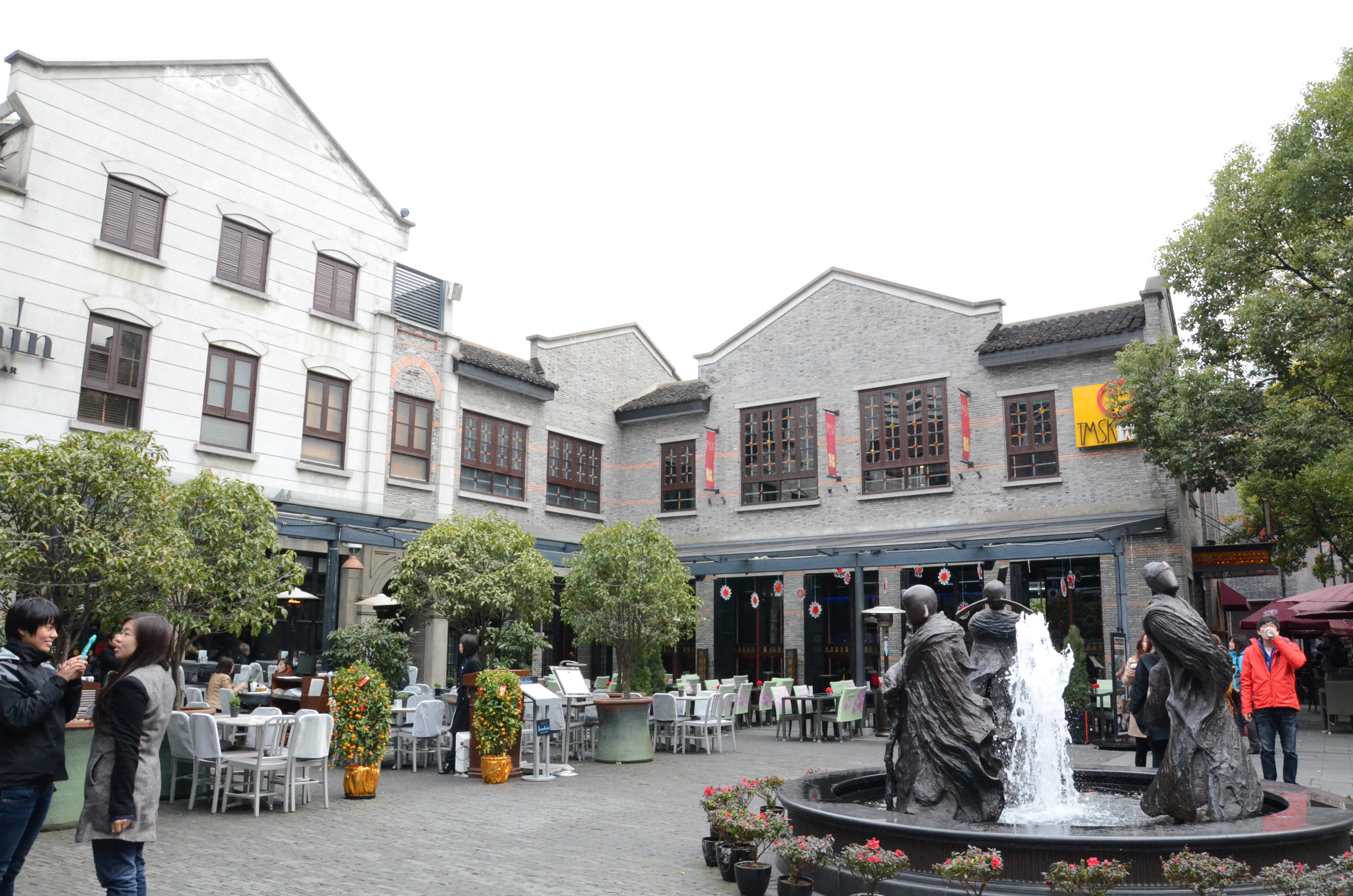Place of Spatial and Ideological Competition
Introduction
Politics oftens shapes the culture and space of a place, and this is particularly obvious in Shanghai. For over a century, Shanghai has experienced intense clashes of values as it changed hands among multiple powerful interests. Apart from sending Shanghai's economy onto a roller coaster ride, these clashes have let Shanghai with a cosmopolitan cultural landscape, where traces of competiting values are juxtaposed against and fused with each other.

The Bund, Shanghai (Photo by Yujie Liang)
Geography of Shanghai
Shanghai lies at the middle of China's eastern coast, near the estuary of the Yangtze River. It is bordered by the Yangtze River to the north, the East China Sea to the east, Hangzhou Bay to the south, and Jiangsu and Zhejiang Provinces to the west. Moreover, Shanghai is a populous city. Not only is Shanghai the largest city in China by population about the second most populous city proper in the world. In 2017, the population of it was as many as 24 million.
The origin of Shanghai culture – Wu culture and South Yangtze culture
Shanghai's culture can be traced back to the regional culture of Yangtze River Delta – Wu culture (吳文化). The origin of Shanghai culture can be traced back to Pre-Wu Culture, which was developed in Primitive society and prospered in Zhou (周) to West Jin (西晉). As a result, Wu culture has a profound influence on Shanghai culture. For example, Shanghai people’s favoritism of art could be attributed to Wu culture.
During Jin to Qing, as the capital city of Jin moved south, Shanghai became an immigrant city flooded with immigrants with the majority of them from Zhejiang. The immigrants from Zhejiang brought South Yangtze Culture (江南文化) into Shanghai. This culture is marked by a combination of rationality (i.e. being pragmatic and emphasizing benefits) and romance (i.e. valuing artwork and attaching importance to moods and feelings). These two values have set the undertone of Shanghai culture.
The culture of Shanghai in colonial period – Shanghai School
Towards the final decades of Qing, Shanghai’s culture underwent rapid transformation. Since 1845, British, American and French successively established their concession (租界) following the defeat of Qing dynasty in the First Opium War. The culture of Shanghai then incorporated Western culture from United Kingdom, France, Russia, America, Jewish culture and Eastern culture from Japan. It would not be exaggerated to claim that nearly all major modern cultures were converged in Shanghai.

Political milestones of modern Shanghai: From late Qing to socialist China (by Anson Tsui)
Both Protestant and Catholic culture were thus introduced into Shanghai. The former emphasized instrumental rationality (i.e. rational calculation of cost and benefit and pragmatism). On the other hand, the latter culture featured art and romance. In this period, the traditions of South Yangtze Culture met the two Religious cultures and merged with them. The tradition of rationality integrated with Protestant culture into a unique culture of rationality and pragmatism in Shanghai. The romance of Shanghai people was also blended with Catholic culture. For example, the Protestant culture reinforced the hard-working of Shanghai people.
Absorbing different culture, Shanghai developed its distinctive culture – Shanghai School (海派文化). Shanghai School consists of diverse, heterogeneous cultures which are inter-diffusing and inter-contradicting. For instance, there were “local – foreign”, “Eastern – Western” and “rationality – romance” conflicts occurred in the same time. The heterogeneity of Shanghai School made it difficult for people to understand Shanghai School with merely the perspective of either China traditional culture or Western traditional culture.
Moreover, after the Opium War, Shanghai became China’s first industrialized city. Backed by Yangtze and being the intersection of freighters from south and north, it was an ideal place for the foreign companies to do business. The influx of foreign capital and technology made Shanghai undergo rapid industrialization.
Characterized as fashionable, modernized, Shanghai was an ideal city pursued by Chinese in late nineteenth century. At that time, Shanghai’s production was itself perceived by Chinese as a brand manifesting high quality. As a result, Shanghai school was also regarded as a modern culture.
Traces of Shanghai School – Chinese painting and Beijing Opera
While the common form of traces is material (i.e. building, signs or statues), they can also be non-material (i.e. rituals, activities or events). One of the outstanding traces of Shanghai School is Chinese Painting.
In 1851, evading from the chaos made by Taiping Heavenly Kingdom (太平天國), many painters and writers migrate to in Shanghai. At that time, the Shanghai School Chinese painting was gradually formed. Different from other painters, the major purposes of Shanghai school painters were profit-making. It in fact contradicted the traditional thought that the purpose of artwork was simply to express emotion. Moreover, one could easily find that the Chinese civil art and Western painting techniques were both embodied in their paintings. Greater form exaggeration and brighter colors were always used in the Shanghai school Chinese painting. Therefore, we could see that the “rationality – romance” and “foreign – local” culture conflicts of Shanghai school were demonstrated in Chinese Painting.



"After the poems of Da Mei" by Ren Xiong (Source: https://en.wikipedia.org/wiki/Ren_Xiong#/media/File:Mjmhg009-renxiong.jpg)
Another trace of Shanghai School was a different version of Beijing Opera (京劇). Compared with the Beijing Opera in Beijing, the Beijing Opera in Shanghai was modernized. Different from traditional opera, scenery setting like the modern drama stage for performance was used. Shanghai school, as a modern culture, was incorporated into Beijing Opera.
Regime change in 1949 – the rise of socialism and the decline of Shanghai school
The People's Republic of China was founded in 1949. It was a watershed of the culture of Shanghai, in which Shanghai school was displaced by the new ideology, socialism. The change of ideology eventually led to the transformation of space. Under socialism, working class theoretically became the ruling class of the state. In a society transformed to embrace socialism, the capitalist space would not be accepted and tolerated. Accepting it means accepting the past political and social structure. As a result, Shanghai space became the resource contested in 1949.
As the communist leader aimed at eliminating the lifestyle of capitalist class, they transformed Shanghai from a commercial city into an industrial city. A strong communist municipal government established a new order of the city conforming to the central spatial planning of the government. Moreover, it underwent transformation of culture. There was no longer import of luxury. Facilities of entertainment such as brothel and nightclub were closed.
Transformation of space – The Bund
The rapid ushering in of communist ideologies was reflected in the transformation of Shanghai’s consumer space into productive space. One of the traces demonstrating the change of culture is The Bund (上海外灘). Shanghai Bund used to be the British concession since 1844. In that period, it was occupied by the most powerful British companies such as Jardine Matheson & Co. (怡和洋行). Moreover, as Shanghai was one of the trading ports under the Treaty of Nanking (南京條約), many foreign companies moved into this area. In short, Shanghai Bund before 1949 could be regarded as the center of Western power in China.
The most modernized part of the city, the Bund was populated with entertainment facilities. After 1949, they were considered as the symbol of capitalism, which contradicted to socialism. As a result, they were soon transformed into other usage. For example, the HSBC Bank Building was transformed into the building of municipal government. As we could see, the building representing the old symbol was transformed and given a new symbol.

Shanghai Xintandi becomes a very popular area today. (Photo by Yujie Liang)
The change of ideology – Shanghai Xintiandi
As Michel Foucault put it, space are symbols of ideologies (Elden, 2016), embodied in buildings and thus play an important role in political and economic strategies. Henri Lefebvre (1991) also added that the nature of space and the production of space is political. It means that space is always contested by different ideologies. Shanghai Xintiandi (上海新天地) is a trace captures the changes in ideology. Moreover it also shows the combination of East and West, tradition and innovation, by converting a century-old Shikumen District (石庫門) into a region of vitality.
In colonial period, Shikumen was one of the most distinctive buildings in Shanghai. Its western architectural style represented the encounter of eastern and western culture. It is the earliest symbol of the penetration of western culture into the daily lives of Shanghai people. The architecture of Shikumen also represented the urbanization process of Shanghai, in which the traditional Chinese culture began to undergo transformation. Living in a limited space, citizen had to learn to become pragmatic and sophisticated. For example, the structure of Shikumen originated from Siheyuan (四合院), incorporating the traditional concept of ‘superiority of seniority’ (長幼有序). On the other hand, it adopted some western architectural styles as to use the space in an efficient way. This mentality, in turn, contributed to Shanghai School.

The Door of a Shikumen Building in East Siwenli before demolished. (Photo by Livelikerw / CC BY-SA 3.0)
Since the 19th century, evading the rebellion of Taiping Heavenly Kingdom, an avalanche of immigrants from other cities fled to Shanghai. The demands of houses like Shikumen, then, increased. In 20th century, as the rents in Shanghai were so high that Shikumen became a popular option for citizens. However, after 1951, Caoyang New Village (曹楊新村), a residential area for working class, was built. At that time, Caoyang New Village, embodying socialism, became the typical architecture of Shanghai. In other words, it reflected the ideology of the ruling socialist government.
In 1978, the situation was changed again when the China central government launched the economic reform. As to reintroduce capitalism, Shikumen district was transformed into a consumption area, Xintiandi. In fact, the establishment of Xintiandi could be seen as the revival of the mercantile culture of Shanghai. Under the transformation by Shanghai government, it became a trendy place in Shanghai, with various foreign brands moving in it. Therefore, capitalist ideology was manifested in it again.
Today, this district becomes a heterogeneous space. Although it incorporates some trendy elements, it also preserves its nostalgic part, such as the structure of the buildings. While foreigners may consider Shikumen as representative traditional Chinese culture, the local may see it as an expression of western cultures. This heterogeneity was also the constituent part of Shanghai School. More importantly, it was a monumental architecture recording the change in ideology.
Reference
Elden, S. (2016). Space, knowledge and power: Foucault and geography. Routledge.
Lefebvre, H. (1991). The production of space. Blackwell: Oxford.


